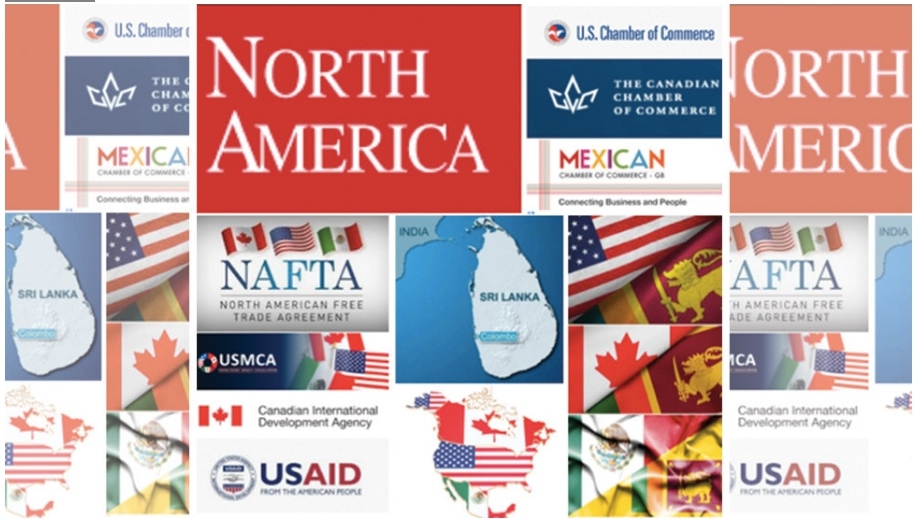US Foreign Policy
By
Dr Srimal Fernando

The Indo-Pacific Region (IPR) is considered as the most significant geopolitical theatre of this century in the midst of ongoing ‘Americanisation’. Hence, South Asia will gain greater prominence in United States of America (USA ) ’s grand strategy with the new American administration’s significant influence in the Asia-Pacific region. Therefore, while being in the midst of geopolitical transformation shaped by numerous simultaneous developments, it is important for the South Asian region to sustain bilateral and multilateral US engagement.
America’s shift in foreign policy towards South Asia will not only impinge on the regional order but will also make nations in the Indian Ocean like Sri Lanka an epicenter through a geopolitical lens. For Sri Lanka to retain diplomacy as a key foreign policy tool will require constant shifting and rebalancing of its external strategies to be in line with the shifting global power structures. Building bilateral cooperation when dealing with broader issues takes time hence future diplomacy between Colombo and Washington should be based on a very wide consensus.
Diversifying and expanding Sri Lanka’s influence and diplomatic presence beyond the USA border with Canada and Mexico through trade cooperation will be key advantages for Sri Lanka which could provide the opportunity to venture into North and Central American markets.
US Foreign Policy in South Asia
A key area of focus for US foreign policy has been the Indian Ocean region along with substantial engagement and arrangements with relevant South Asian nations. The US considers Sri Lanka as a key player in the Indo-Pacific region and as a gateway to the Indian Ocean given the country’s importance as an Island Nation and its strategic positioning in proximity to India.
While it has been seventy-three years since Sri Lanka and the United States entered into formal ties, since then, a new line of thinking on bilateral relations has developed in foreign policy circles. In the past, Sri Lanka may have been seen as a small and expendable island but currently the country is seen as a strategic maritime asset which could possibly offset China’s rapidly increasing regional influence. With Sri Lanka’s positioning in the Indian Ocean Rim, the United States should not discount the island nation’s strategic importance to USA’s regional policy while stronger ties between the two countries may define the partnership in the 21st century.
Trade and aid from the United States in the last seven decades has enabled Sri Lanka’s economy to grow leading to infrastructure development. According to the United States Agency for International Development (USAID), Sri Lanka has received over $ 2 billion in development aid resulting in favourable economic conditions in the country that are conducive for trade, tourism, and investment. Sri Lanka-USA bilateral trade figures stand at $ 3.2 billion with Sri Lankan garment exports alone bringing $ 2.1 billion into the country.
There is also a large presence of Sri Lankan migrants in the USA. According to the report by the Pew Research Centre: the Sri Lankan Diaspora in the USA, is generally educated and affluent; and is the third most successful Asian American group earning a median income of $74,000. One of the prominent personalities of Sri Lankan descent is New York born Julia Wijesinghe, founder of the Sri Lankan Art & Cultural Museum.
Strengthening Canada’s Foundations
Canada is home to an estimated 300,000 Sri Lankan Diaspora; the single largest in any country. The past four decades has seen the Sri Lankan Tamil Diaspora in Canada progressively gaining recognition while becoming an important player in Canada’s political arena. For instance, some of the most prominent politicians of Sri Lankan-Canadian origin are: Gary Anandasangaree, a Member of the Canadian Parliament and an internationally recognised human rights lawyer.
Over the past sixty years, Canadian Aid has played a major role in Sri Lanka’s development efforts making a significant difference to the communities in the country. Canada’s bilateral Official Development Assistance (ODA) to Sri Lanka in 1980/81 was $ 37.69 million and in 1987/88 it was $ 24.5 million (Hull: Canadian International Development Agency (CIDA, 1989). A massive contribution of $100 million was provided by Canada towards the construction of the Maduru Oya Reservoir, under the Accelerated Mahaweli Development Programme. In addition, Canada announced the provision of $22.5 million in humanitarian assistance to Sri Lanka in response to emergency needs in 2009.
As much as aid, Sri Lanka’s strong trade relationship with Canada illustrates the growing influence and the closer ties between the two countries. Sri Lanka’s commercial ties with Canada are modest but on an upward growth trajectory. While the volume of trade had grown by 25 per cent in 2015, both countries look forward to enhancing bilateral trade specifically in the priority sectors; agro food, infrastructure, aviation, clean tech and education. In 2017, total merchandise trade between Sri Lanka and Canada was $579 million.
Going forward, it can be optimistically assumed that Sri Lanka and Canada can look towards strengthening the foundations of the diplomatic ties between the two countries.
NAFTA and USMCA
The North American Free Trade Agreement (NAFTA) was signed more than thirty years ago to promote trade between the United States, Canada, and Mexico. NAFTA was slowly phased out and re-structured with the hope that a new trilateral pact will revive the USA’s manufacturing sector. Hence, NAFTA that had been in effect since January 1994 was replaced by the United States-Mexico-Canada Agreement (USMCA); a trade pact signed on November 2018 gives access to North American markets. Most significantly the UMSCA specifies new trade procedures for automobiles and automotive parts and stipulates minimum wages for workers in automobile manufacturing at $16 per hour. In addition, the agreement increases US farmer’s access to the Canadian dairy sector. Unlike NAFTA, the USMCA will expire after sixteen years.
Far-sighted US foreign policy
USA’s relations with countries in the Indo-Pacific region through its foreign policies could lay the foundation for transformation towards further development. Sri Lanka is one of the major beneficiaries of the new USA foreign policy which under the current administration’s Indo-Pacific policy is strategically aligned with India to counterbalance influential powers in the region. Being positioned in the centre of the Indian Ocean, Sri Lanka can play a significant role in positively impacting the economic futures of the regional nations.
While there is little doubt that Sri Lanka holds considerable importance in America’s national security agenda a close partnership will bolster both peaceful maritime security and trade sentiments in this region. The outcomes of these efforts can be a huge potential benefit for the USA as it builds its long-term security strategy expanding influence in the Indian Ocean. The implementation of practical South Asian foreign policy necessitates the participation of shared responsibilities amongst numerous organisations in both Sri Lanka and the United States, which will create the necessary prerequisites for the USA to secure a stronger footing on the island nation.
About the Author
Dr. Srimal Fernando received his PhD in the area of International Affairs. He was the recipient of the prestigious O. P Jindal Doctoral Fellowship and SAU Scholarship under the SAARC umbrella. He is also an Advisor/Global Editor of Diplomatic Society for South Africa in partnership with Diplomatic World Institute (Brussels). He has received accolades such as 2018/2019 ‘Best Journalist of the Year’ in South Africa, (GCA) Media Award for 2016 and the Indian Council of World Affairs (ICWA) accolade. He is the author of ‘Politics, Economics and Connectivity: In Search of South Asian Union.


